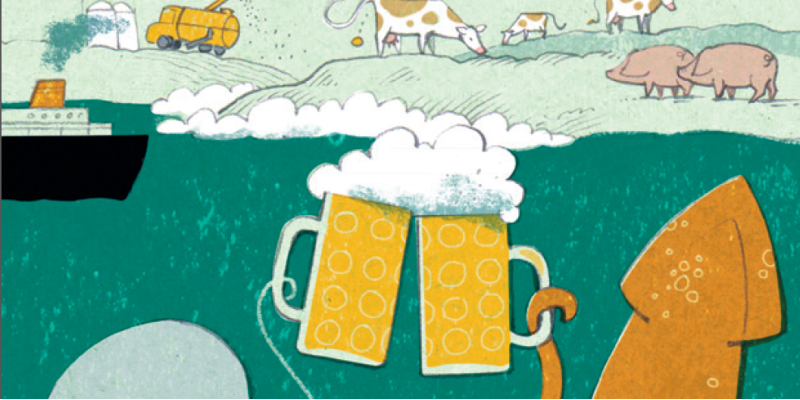Excessive nutrient concentrations in the sea
 Click to enlarge
Click to enlargeSource: Umweltbundesamt
 Umweltbundesamt
Umweltbundesamt
 Click to enlarge
Click to enlargeHuman activities like agriculture and industrial processes result in large quantities of nutrients like nitrogen and phosphorus ending up in the sea. Excessive nutrient concentrations lead to eutrophication, the exponential growth of plants and algae which impairs marine ecosystems. As a consequence, algal blooms cloud water bodies, blocking sunlight; oxygen becomes scarce as algae consume most of it; water quality deteriorates and foam piles up on sea shores; the ecosystem can collapse.
An oversupply of nutrients in the sea can be largely traced back to the excessive and often improper application of liquid manure in conventional agricultural fields. Nitrogen from wastewater and nitrous oxide from livestock farming and fertilisers used in agriculture enter water systems and make their way to the sea. Municipal sewage treatment plants, emissions from industry, road and shipping traffic enter water bodies via the air and rainfall. Rivers transport excessive nutrients to the sea where they cause eutrophication.
A rethink of agricultural practices is necessary to avoid excessive nutrient inputs into water bodies. Measures to limit the impact of agriculture include responsible fertilization practices and reducing livestock densities. Consumers could also make a contribution: eat less meat, buy organic produce and use public transport. Reducing the concentration of nitrogen in the air and water would also help. This could be achieved by filtering gases from livestock buildings and vehicles and reducing pollution from sewer systems and sewage treatment plants.
More information (in German only) on the topic of eutrophication can be found on the UBA topic pages on Eutrophierung and Impact of agriculture.